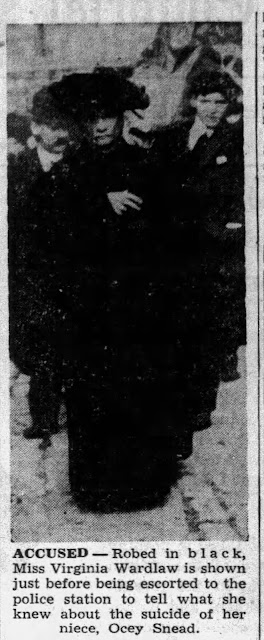Currently on eBay, there is a copy of Virginia Ghosts and Others by Marguerite Du Pont Lee. This is the William Byrd Press original 1932 version. It’s $125 and I keep toying with the idea of purchasing it, not that I need another book in my possession but this one is part of our Virginia history-- our history of ghost stories.
If you’re around my age and from the area, you’re probably familiar with the author L. B. Taylor, Jr. of Williamsburg, Virginia. Taylor was an author of 50 non-fiction books, including 25 books on Virginia ghosts.Taylor wasn’t someone that others would consider a typical ghost story writer. After all, he had a degree in journalism even worked as a writer for NASA. Taylor published his first volume on Virginia ghosts in 1983, which some scholars argue is the reason regional ghost tours in the Commonwealth are so popular today. But Taylor also wasn’t the first writer to focus on the topic. He was following in the tradition of documenting Virginia folklore from writers such as Marguerite DuPont Lee.
And, well, Marguerite DuPont Lee certainly wasn’t someone we would think of as a ghost story writer. She was born into the wealthy DuPont family and married into the Lee family (by marrying her cousin, which wasn't so unusual) to become part of the elite society of Washington, D.C.
From her obituary, one would not gleam what an interesting life she had, only that she was surrounded by family.
 |
| The Baltimore Sun Nov 3, 1936 |
Perhaps from other newspaper articles, including this one that includes a quote just months before her death, readers can intuit a bit of her personality.
 |
| The Selma Times Journal May 25,1936 |
When her husband died, Marguerite DuPont Lee proved that she was not going to follow society’s standards and she certainly was not going to do what was expected. She somewhat snubbed society folks, she sold her home, and she moved to Georgetown, which at the time was not at all elite.
There, she started a settlement
house that provided educational opportunities for the poor in the city. Marguerite DuPont Lee involved herself in the local women’s suffrage movement and marched in the
1913 Women’s Suffrage Parade in Washington, D.C. She was deeply engaged in the cause of women's rights and the rights of those from various socioeconomic groups.
Today, readers still reach for her stories, which were republished after her death. She is buried in Congressional Cemetery in Washington, D.C. along with several other Spiritualists.








